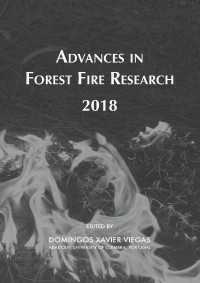Please use this identifier to cite or link to this item:
https://hdl.handle.net/10316.2/44538| DC Field | Value | Language |
|---|---|---|
| dc.contributor.author | Calvo, Leonor | |
| dc.contributor.author | Tárrega, Reyes | |
| dc.contributor.author | Valbuena, Luz | |
| dc.contributor.author | Marcos, Elena | |
| dc.contributor.author | Taboada, Angela | |
| dc.contributor.author | Fernández-García, Víctor | |
| dc.contributor.author | Fernández-Guisuraga, José Manuel | |
| dc.contributor.author | Fernández Manso, Alfonso | |
| dc.contributor.author | Quintano, Carmen | |
| dc.contributor.author | Luis, Estanislao de | |
| dc.contributor.author | Reyes, Otilia | |
| dc.contributor.author | Jaime Baeza, M. | |
| dc.contributor.author | Suárez-Seoane, Susana | |
| dc.date.accessioned | 2018-11-09T12:02:08Z | |
| dc.date.accessioned | 2020-09-06T17:31:14Z | - |
| dc.date.available | 2018-11-09T12:02:08Z | |
| dc.date.available | 2020-09-06T17:31:14Z | - |
| dc.date.issued | 2018 | - |
| dc.identifier.isbn | 978-989-26-16-506 (PDF) | |
| dc.identifier.uri | https://hdl.handle.net/10316.2/44538 | - |
| dc.description.abstract | Fire is one of the most important disturbance processes in Pinus forest ecosystems in the Mediterranean Basin. These ecosystems differ markedly in their response to this disturbance. They rely on climatic conditions in the area, fire regime and biological traits of the vegetation. Thus, understanding the influence of climatic conditions and fire characteristics in shaping postfire vegetation recovery will help to identify the most appropiate post-fire management strategies. During recent decades, wildfire ocurrence in fire-prone ecosysems in the Mediterranean Basin has increased because of changes in land use, increased fuel load and continuity in the landscape. Moreover, these socio-ecological changes are related to the increase in burn severity and the surface affected. These large wildfires usually result in high heterogenous spatial mosaics with different degrees of severity and recurrence, which clearly influence vegetation regeneration capacity. However, fire regime characteristics not only affect vegetation regeneration after wildfire but also climatic conditions and their functional traits. Many authors recognise that in situations of high recurrence, resprouter species have an advantage over seeders. To determine how vegetation regeneration in a Pinus fire-prone ecosystem may be related to climatic gradients, fire regime characteristics and plant traits, we selected three large wildfires that occurred in the Iberian Peninsula during 2012 and 2013: the Carnota wildfire in Atlantic climate conditions (Galicia), the Sierra del Teleno wildfire in transition climatic conditions (León) and the Cortes de Pallás wildfire in Mediterranean climatic conditions (Valencia). In each study area, a burn severity map of two levels (low and high) was obtained from a classification (threshold) of a Landsat-based differenced Normalized Burn Ratio image. Moreover, in each fire scar we evaluated recurrence in the last 20 years and differentiated two recurrence situations: low (1 wildfire) and high (2 or more wildfires). As a result, four scenarios were differentiated: low recurrence-low severity, low recurrence-high severity, high recurrence- low severity and high recurrence-high severity. In each scenario, a proportional number of 2 m x 2 m plots were established. In each plot, we sampled the visual cover percentage of all plant taxa in 4 subplots of 1 m2 three years after the wildfire. Mean cover values of Pinus saplings and resprouter and seeder shrubs were differentiated and compared among fire regime scenarios and climatic conditions. We observed diferences in the regeneration patterns in the three study sites, with more similarity between the Transition and Mediterranean ones. The common pattern of regeneration among the three climatic conditions has a significant negative effect on Pinus recruitment and cover in scenarios of high recurrence with low and high severity. At the same time, the resprouter shrubs species were favored by high recurrence. | eng |
| dc.language.iso | eng | - |
| dc.publisher | Imprensa da Universidade de Coimbra | por |
| dc.relation.ispartof | http://hdl.handle.net/10316.2/44517 | por |
| dc.rights | open access | - |
| dc.subject | climatic gradients | eng |
| dc.subject | Pinus forest | eng |
| dc.subject | post-fire regeneration | eng |
| dc.subject | vegetation functional traits | eng |
| dc.subject | wildfire recurrence | eng |
| dc.subject | wildfire severity | eng |
| dc.title | Climatic conditions and fire regime affect vegetation recovery after large wildfires in Pinus forest ecosystems | por |
| dc.type | bookPart | por |
| uc.publication.firstPage | 209 | - |
| uc.publication.lastPage | 217 | - |
| uc.publication.location | Coimbra | por |
| dc.identifier.doi | 10.14195/978-989-26-16-506_21 | - |
| uc.publication.section | Chapter 2 - Fuel Management | por |
| uc.publication.digCollection | PB | por |
| uc.publication.orderno | 21 | - |
| uc.publication.area | Ciências da Engenharia e Tecnologias | por |
| uc.publication.bookTitle | Advances in forest fire research 2018 | - |
| uc.publication.manifest | https://dl.uc.pt/json/iiif/10316.2/44538/204019/manifest?manifest=/json/iiif/10316.2/44538/204019/manifest | - |
| uc.publication.thumbnail | https://dl.uc.pt/retrieve/11057085 | - |
| uc.publication.parentItemId | 55072 | - |
| uc.itemId | 68799 | - |
| item.grantfulltext | open | - |
| item.fulltext | With Fulltext | - |
| Appears in Collections: | Advances in forest fire research 2018 | |
Files in This Item:
| File | Description | Size | Format | |
|---|---|---|---|---|
| climatic_conditions_and_fire_regime.pdf | 738.45 kB | Adobe PDF |  |
Items in DSpace are protected by copyright, with all rights reserved, unless otherwise indicated.
